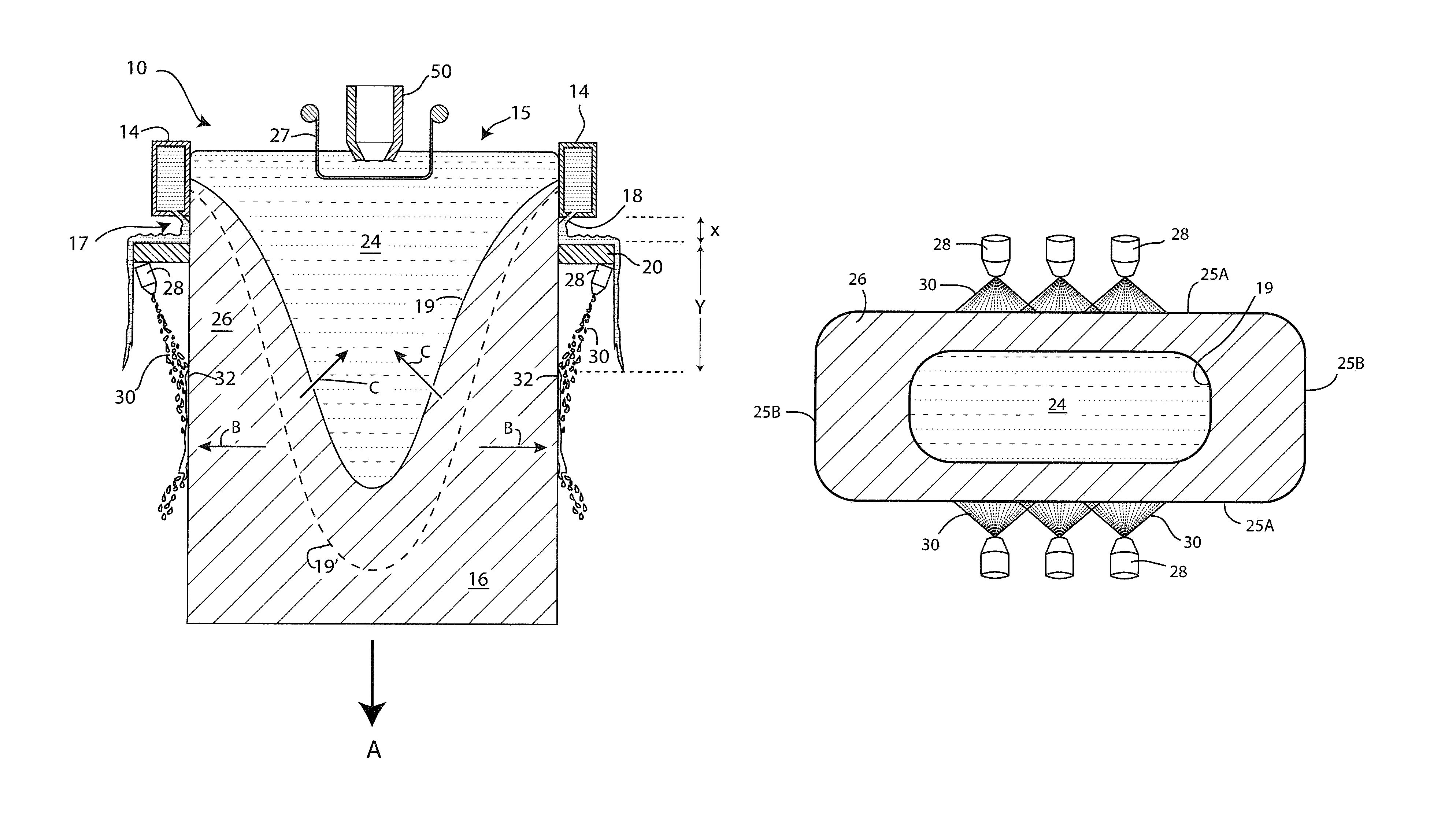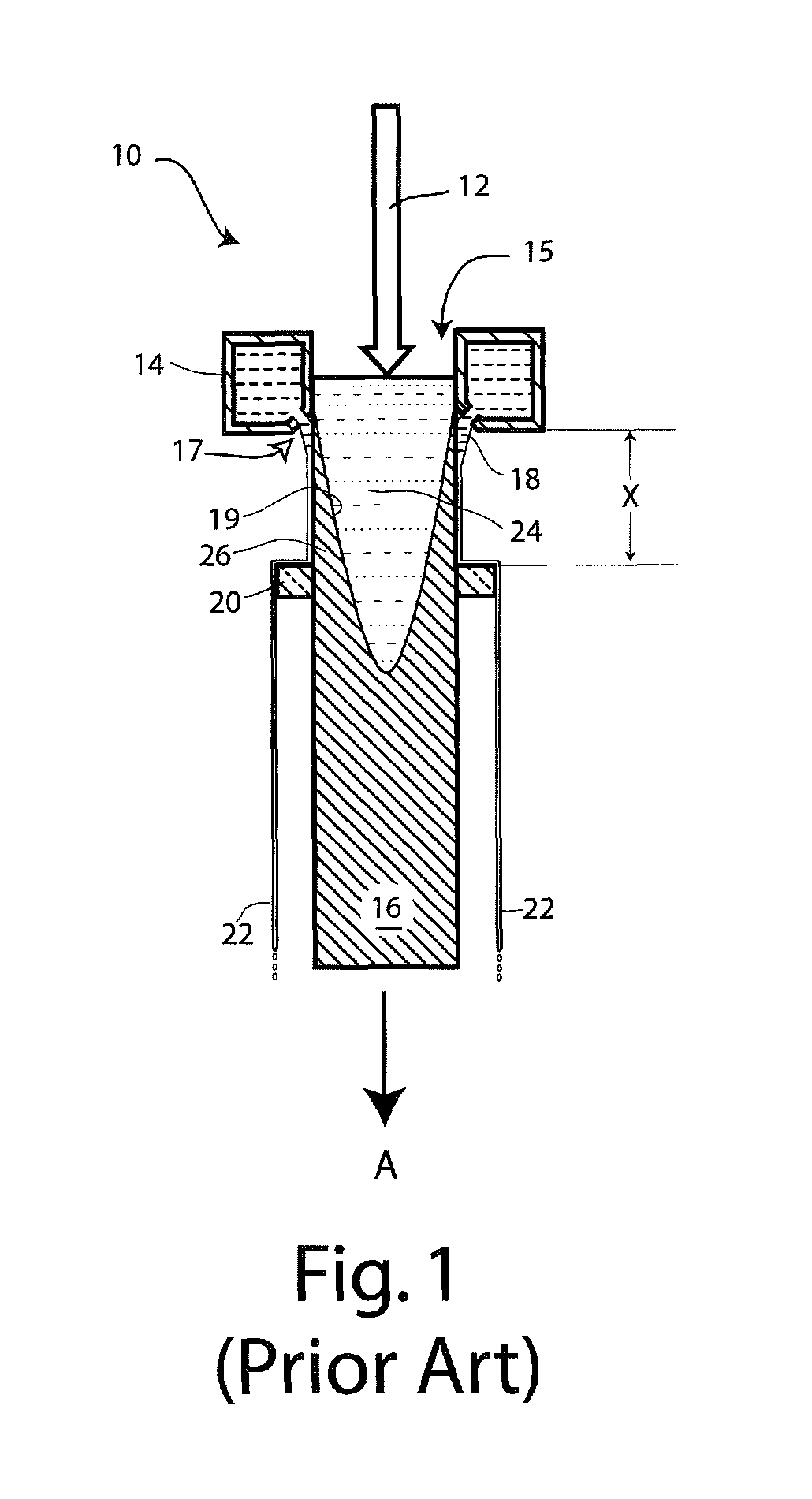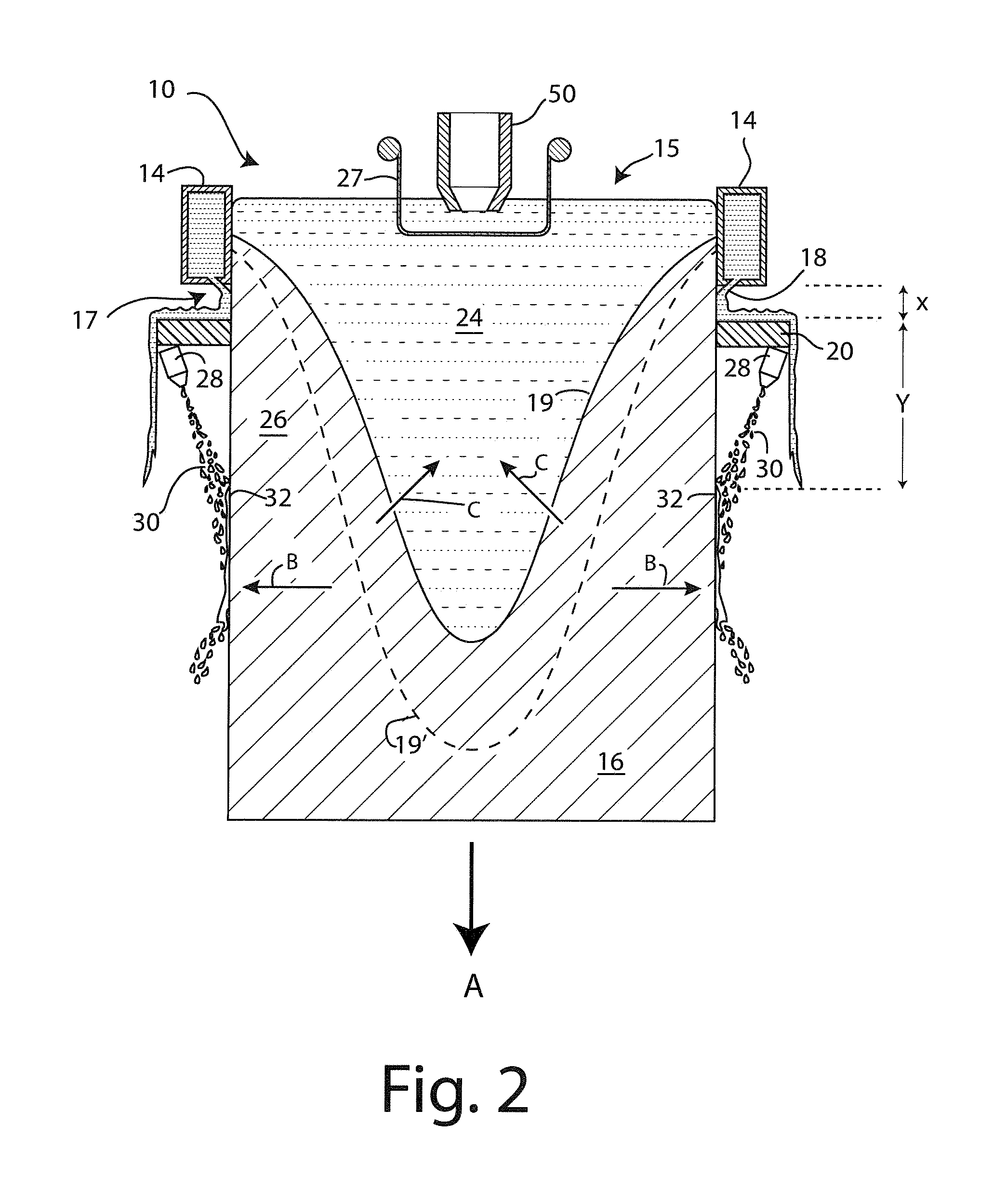In-situ homogenization of DC cast metals with additional quench
a technology of dc cast metals and quench, which is applied in the field of casting of molten metals, can solve the problems of more severe changes in the chemistry across the thickness of the ingot, poor first crystals to solidify from an aluminum alloy, and possible materialization of certain metallurgical effects, etc., and achieve the effect of preventing the temperature rise and reducing the size of the ingo
- Summary
- Abstract
- Description
- Claims
- Application Information
AI Technical Summary
Benefits of technology
Problems solved by technology
Method used
Image
Examples
examples
[0052]Experimental ingot castings were carried out to investigate the effects of direct chill casting with in-situ homogenization both with and without a quench (tertiary cooling) to investigate the effects of exemplary embodiments of the invention. The results obtained are illustrated in FIGS. 4 to 19 of the accompanying drawings.
[0053]First, a brief description of each sample discussed below. These samples are listed in chronological order and not in the order that they appear below.
[0054]Sample 1 is a test sample cast in a production center on a 600×1850 mm mold (23.6×72.8 inch) with a cast speed of 68 mm / min (2.68 in / min). This cast used the normal DC casting practice.
[0055]Sample 2 is from the same cast as Sample 1, but from a different ingot that underwent the in-situ homogenization method. This resulted in a maximum rebound temperature of 550° C. (1022° F.). Sample 2 refers to a slice cut from this ingot, with multiple points of interest examine across the width and thickness...
PUM
| Property | Measurement | Unit |
|---|---|---|
| convergence temperature | aaaaa | aaaaa |
| distance | aaaaa | aaaaa |
| width | aaaaa | aaaaa |
Abstract
Description
Claims
Application Information
 Login to View More
Login to View More - R&D
- Intellectual Property
- Life Sciences
- Materials
- Tech Scout
- Unparalleled Data Quality
- Higher Quality Content
- 60% Fewer Hallucinations
Browse by: Latest US Patents, China's latest patents, Technical Efficacy Thesaurus, Application Domain, Technology Topic, Popular Technical Reports.
© 2025 PatSnap. All rights reserved.Legal|Privacy policy|Modern Slavery Act Transparency Statement|Sitemap|About US| Contact US: help@patsnap.com



